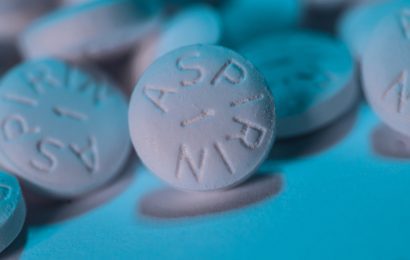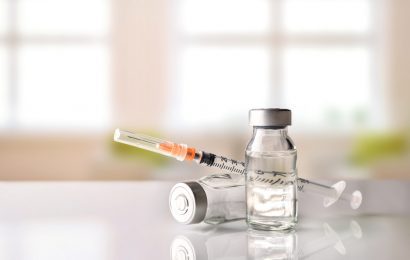For people with Type 1 diabetes, is there really anything more personal and significant in your life than your insulin program? In a way, your insulin program defines your lifestyle. It can either dictate your meal, sleep, and activity schedules, or it can set you up for successful control of your diabetes. Unfortunately, most people are given little choice or education on how to select the insulin program that best meets their needs. As a matter of fact, many people probably put more thought and effort into choosing a car — perhaps because they have a better idea of what they’re looking for.
So what should you look for in an insulin program, and how do you know if the one you’re following is really the best one for you? Read on for some tips on this important decision.
What’s in an insulin program?
Every insulin program for people with Type 1 diabetes should include a basal, or “background,” insulin. Basal insulin is necessary to cover the liver’s secretion of glucose throughout the day and night, which provides the cells with a continuous supply of glucose to burn for energy. Insufficient basal insulin at any time will result in a sharp rise in blood glucose level and can also lead to the buildup of ketones, acidic by-products of fat-burning that can accumulate in large amounts if no glucose is being burned simultaneously. If high blood glucose and ketones are not treated promptly, a life-threatening condition called diabetic ketoacidosis can develop.
Each person’s basal insulin requirements are unique, but typically they are higher during the early morning and lower in the middle of the day. This is due to the nighttime production of blood-sugar-raising hormones and to the enhanced insulin sensitivity that comes with daytime physical activity.
Basal insulin coverage can be supplied by a variety of insulins. Intermediate-acting insulin (NPH) is typically taken once or twice daily. NPH begins working within 1–3 hours, provides peak coverage about 4–8 hours after injection, and tapers off about 12–24 hours after the injection. The long-acting basal insulin analogs glargine (brand name Lantus) and detemir (Levemir) offer relatively peakless background insulin for approximately 24 hours; They are usually injected once a day. Insulin pumps deliver rapid-acting insulin in small pulses every few minutes for basal coverage; this output can be adjusted and fine-tuned to match the body’s fluctuating basal insulin needs.
In addition to basal insulin, mealtime insulin “boluses” are needed to cover the rapid blood sugar rise that occurs after eating. Carbohydrate (sugars and starches) usually takes about 10–15 minutes to begin raising your blood sugar level, with a high point occurring about 30–90 minutes after eating, depending on the size and composition of the meal. Ideally, mealtime insulin doses should be timed so that the insulin’s peak activity occurs simultaneously with the peak blood sugar rise after the meal.
The rapid-acting insulin analogs aspart (NovoLog), glulisine (Apidra), and lispro (Humalog) begin acting within 5–15 minutes of injection and peak about 30–90 minutes after injection, making these convenient and effective mealtime insulins: They can be taken just prior to eating, and they clear rapidly from the bloodstream, reducing the risk of low blood glucose later on. Regular insulin, which is considered a short-acting insulin, peaks about 1–3 hours after injection and must be taken 30–60 minutes prior to the meal. Due to its relatively slow and inconsistent peak and long duration of action (it can last up to six hours), Regular can sometimes cause hypoglycemia several hours after a meal. However, Regular can sometimes be the preferred mealtime insulin — for instance, when an extra-large or high-fat meal is likely to raise blood glucose gradually over several hours.
In some insulin programs, intermediate-acting insulin can be used to cover meals that will be consumed 4–6 hours after injection. For example, NPH taken at breakfast can be used to cover the carbohydrate eaten at lunch, since their peak activity occurs around 4–8 hours later. However, because of its broad and sometimes unpredictable peaks, NPH taken in the morning can often cause blood glucose level to drop before lunch, especially if the meal is delayed.
Each insulin has its share of pluses and minuses, and choosing the right combination of basal and bolus insulins is not a simple decision. Here, then, is a user’s guide to some of the most commonly used insulin programs.
Option 1: The Beater
BREAKFAST: NPH plus aspart, lispro, or glulisine
DINNER: NPH plus aspart, lispro, or glulisine
The standard program used throughout the 1980’s and 1990’s (using Regular insulin, not one of the analogs), this plan’s main benefit — its simplicity — is also its main drawback. Although only two injections are needed a day, with intermediate-acting insulin peaking around lunchtime and tapering off in the afternoon, the Beater plan severely limits flexibility in terms of meal times and carbohydrate amounts at each meal. The large dose of intermediate-acting insulin in the morning predisposes the user to low blood glucose if lunch is even slightly delayed or if you’re more active than usual. Because you’re not taking an insulin bolus at lunchtime, you may experience high blood glucose levels right after eating. Also, if your basal insulin dissipates before your dinnertime injection, a late afternoon high can occur. With the Beater program, a bedtime snack may be needed to prevent low blood glucose at night, when the evening dose of NPH is peaking.
The Beater is a great program if you don’t like injecting yourself or if your meals and activity patterns don’t vary much from day to day. But it’s not so good if you want to manage your blood sugar intensively or if you prefer a more flexible schedule and meal plan. Many people with Type 1 diabetes start out on the Beater plan but progress to three or more daily injections for better diabetes control.
Note: Premixed insulins, such as combined NPH and lispro, can make this therapy even more convenient for some, because they eliminate the need to mix the insulins yourself. However, premixed insulins make it impossible to increase or decrease the dose of one insulin type without also changing the other.
Option 2: The Economy Compact
BREAKFAST: NPH plus aspart, lispro, or glulisine
DINNER: aspart, lispro, or glulisine
BEDTIME: NPH
This plan was designed to correct one of the common problems with the Beater program, frequent low blood glucose at night. By moving the second intermediate-acting insulin injection from dinnertime to bedtime, the insulin’s peak activity is shifted to early morning (when hormonal activity tends to cause high blood glucose), which reduces the risk of lows in the early part of the night, when insulin needs are typically lowest. However, the morning injection of the intermediate-acting insulin still tends to result in a blood sugar level drop before lunch (a midmorning snack may be necessary to prevent this), and afternoon high blood glucose can also be a problem, since the morning intermediate-acting insulin provides minimal coverage by late afternoon. An additional shot of rapid-acting insulin may be needed if you choose to have an afternoon snack.
As with the Beater program, this plan can produce frequent lows, and it can be difficult to adjust for daytime exercise due to the inconsistent absorption of the intermediate-acting insulin. The lunch meal must be consistent in carbohydrate from day to day, since it is covered by the morning injection.
Option 3: The Station Wagon
BREAKFAST: aspart, lispro, or glulisine
LUNCH: aspart, lispro, or glulisine
DINNER: aspart, lispro, or glulisine
SNACKS: aspart, lispro, or glulisine
BEDTIME: NPH
The Station Wagon is one of those work-intensive, low-glitz regimens known as multiple daily injection therapy. Intermediate- or long-acting insulin taken once a day at bedtime provides an early-morning peak to cover typically higher morning insulin needs, as well as a prolonged “tail” of action that usually ensures the presence of background insulin throughout the day. Because intermediate-acting insulin is not peaking during the day, you have more flexibility with meal times. However, the intermediate- or long-acting insulin may not last a full 24 hours, putting some users at risk for high blood sugar in the afternoon or evening.
The Station Wagon plan is a fairly reliable program that offers good diabetes control, although it also requires frequent “pit stops” to fuel up with insulin at every meal and carbohydrate-containing snack. Taking insulin with each meal and snack allows you to closely match insulin doses to anticipated carbohydrate consumption and planned activity, as well as to make timely corrections for high readings before meals. Many people find that using insulin pens instead of syringes can make frequent injections less of a chore.
Option 4: The Muscle Car
BREAKFAST: aspart, lispro, or glulisine
LUNCH: aspart, lispro, or glulisine
DINNER: aspart, lispro, or glulisine
SNACK: aspart, lispro, or glulisine
ONCE A DAY, AT A CONSISTENT TIME: glargine or detemir
Glargine and detemir are those hot, new insulins that everyone wants to take for a test drive. They are the first formulations that serve as truly basal insulins — that is, they provide relatively steady and peakless coverage for approximately 24 hours. As with the Station Wagon program, the Muscle Car plan requires injections at every meal and snack. Although glargine or detemir can be injected at any time of day, it must always be given in a separate syringe, since mixing it with another insulin can alter its activity.
People on this program must be willing to take lots of shots, but the lack of a basal insulin peak translates into consistent absorption and activity from day to day, allowing flexible meal, snack, and exercise times and enabling you to match mealtime boluses to carbohydrate consumption and planned activity. Occasionally, people may have high readings in the morning due to the liver’s increased glucose production at night. Lows can also occur in the middle of the day, when basal insulin needs tend to be lower.
Using basal glargine or detemir together with mealtime rapid-acting insulin more closely mimics the activity of a healthy pancreas than other injection regimens. Overall, long-acting insulin users seem to experience far fewer lows and have much better overall diabetes control than those who use intermediate-acting insulin.
Option 5: The Engineered Import
Insulin pump therapy
Insulin pumps are cell-phone-size, computerized devices that contain only rapid-acting insulin. Pumps are programmed by the user to deliver tiny pulses of insulin every few minutes, providing basal insulin coverage throughout the day and night. Larger boluses are programmed and delivered with the touch of a button at mealtimes. The insulin is delivered by way of a small, soft plastic tube called an infusion set, which is inserted just below the skin. The infusion set must be changed every couple of days to prevent infection and ensure consistent insulin absorption.
What makes pump therapy unique is the ability to adjust basal insulin levels in a fairly precise manner. By programming the basal insulin output to match the body’s normal production of glucose, pump users can attain the utmost freedom and flexibility in terms of food, activity, and sleep patterns. Special basal insulin patterns or temporary basal rates can also be set for certain days or for occurrences such as the premenstrual period, pregnancy, stress, illness, or extended exercise, when basal needs may be higher or lower than usual.
Mealtime insulin doses are determined by the amount of carbohydrate in the meal, as well as premeal blood glucose level and anticipated physical activity. The doses can be highly precise: Insulin can be administered in half units or even tenths or twentieths of a unit, depending on the pump model. In addition, most pumps offer the option of delivering mealtime insulin steadily over an extended period of time (rather than all at once) if you are eating an extra-large or high-fat meal that may take a while to digest.
Despite the fact that pump users tend to have improved blood glucose control, fewer hypoglycemic episodes, and almost unlimited lifestyle flexibility, pump use does have its drawbacks. To begin with, it takes extra training and frequent blood glucose monitoring to fine-tune your basal rates and bolus formulas and learn to make insulin adjustments on your own. It usually takes at least a month before decent blood glucose control can be achieved. In addition, because no long-acting insulin is used, pump users are at high risk of developing ketoacidosis in the event of a programming mistake or a mechanical problem, such as a kink in the tubing that blocks insulin delivery. Wearing the pump can be an inconvenience at times, and some people may find it embarrassing. Inserting the infusion set beneath the skin requires a relatively long introducer needle, which can be painful and intimidating at first (although there are special insertion devices that can make this easier and less painful). The tape that holds the infusion set in place can come loose or cause irritation at the insertion site. Finally, the cost of the pump ($4,000–$6,500, plus hundreds of dollars a month in pump supplies) makes it prohibitive for those who do not have adequate health insurance.
Give it a test drive
Choosing the right insulin program — like choosing a car — means finding something that fits your budget, your lifestyle, and your needs. Who wouldn’t love to tool around town in a Corvette Stingray convertible? The trouble is, it’s a bit pricey, and it isn’t all that practical for some (it couldn’t fit, for instance, four kids, two booster seats, two infant car seats, plus diaper bags and coloring books). Similarly, a low-price beater isn’t a deal if it spends half its time in the shop.
When it comes to your insulin therapy, you want a program that provides the greatest overall blood glucose control with the least inconvenience. Carefully considering your options can lessen the impact of diabetes on your lifestyle and greatly improve your long-term health and quality of life.
If you think your current regimen could use an upgrade, consider what you like and dislike about it, and share this information with your health-care team. Be as honest and detailed as possible about your schedule, your habits, and your frustrations. Are you experiencing frequent highs or lows at certain times of day? Are you having a hard time handling so many injections? Are you tired of having to eat snacks when you’re not hungry? Often, you can “test drive” a new insulin or a different insulin regimen for a month or two to see how well it works for you. (Click here to see a chart comparing insulin regimens.)
And what if your health-care team doesn’t agree with your decision to change your program? Ask them why. Perhaps they have some good arguments that will sway your decision. If not, you might want to look for a second opinion. After all, it’s your diabetes, and you have the right to manage it in the manner that suits you best.





